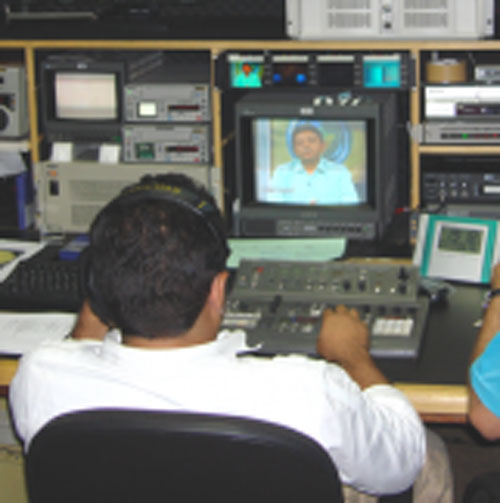
About the Project
This project is one of the 2009 WISE Awards winners.
The Distance Learning in the Amazon Forest project was launched in 2007 by the Education Secretariat of Amazonas (SEDUC/AM). Amazonas is the largest state in Brazil with a population of 3.8 million inhabitants, half of whom live in the capital, Manaus. Ninety-two percent of its area is covered by the Amazon Forest and the rivers of the Amazon basin. The population from the hinterland of the state is spread out across small towns and villages, mostly accessible after a 21-day trip by boat via rivers.
The project involves transmitting live classes given by teachers, from three studios located at the main office of the Secretariat of Education in Manaus, via a two-way video-conference link to 35,000 students per year, in over 900 schools and 2,000 classrooms, throughout the 62 county districts. A teacher is also located at each classroom to support local activities. The technology kit in each classroom comprises a satellite antenna linked to a satellite router, a radio transmitter, a computer, a printer, a web camera, a microphone, a VoIP phone, a no-break power supply, a 42” LCD television and Internet connection.
The project addresses an urgent social need and was therefore carefully devised with a view to fostering the participation of all students and teachers, allowing the integration of different cultures – even when hundreds of kilometers apart.
Context and Issue
The Education Secretariat of Amazonas initiated a school demand survey in the Amazonian counties and found that many students residing in rural communities finished the second stage of elementary school and did not continue their studies. This happened because the traditional educational model was not able to cater to the demands of these students, as the schools that offered secondary education were mostly located in municipal areas, due to demographic concentration. The rural communities were usually dispersed and were excluded from various public services because of the difficulty of accessing urban zones. Furthermore, there was a shortage of trained teachers to staff them.
The initial challenge to accomplishing educational projects in the State of Amazonas is its immense natural hydrographic mesh, considered the largest in the world. According to the IBGE (Brazilian Institute of Geography and Statistics), there are over 1,000 rivers, which limit highway access in the state. There are 62 counties in 1.6 million km2, which is equivalent to one fifth of the national territory, with low population density. A further logistical challenge is the precarious supply of electricity in the Amazonas region, mainly in rural communities, and the poor telecommunication infrastructure.
Solution and Impact
The underlying innovative model of the project is the combination of satellite transmission technology, the multi-point videoconference as an educational tool, and in-attendance methodology with technological mediation to reach very remote communities in the Amazon.
The project offers innovative and quality education through information and communication technologies, diversifying the support. The resources of satellite transmission and the communication service platform are used to provide basic education on a large scale, outside urban areas. To date, the project has been replicated in in seven other Brazilian states. From 2007 to 2014, 215,000 students were provided with lessons.
The project was designed to reach students in rural communities which lacked a regular school system, including regions in the Amazon which are difficult to access.
Future Developments
The models used in Amazonas were solutions to specific problems but it is important to remember that Brazil continues to have problems providing teachers, especially for the rural sector, and is still a long way from the universalization of secondary education, which in 2009 was only 50.9 percent. One of the goals for the next five years is to improve schooling for rural populations and increase the net rate of enrollments in secondary education to 85 percent of the population from 15 to 17 years of age.


